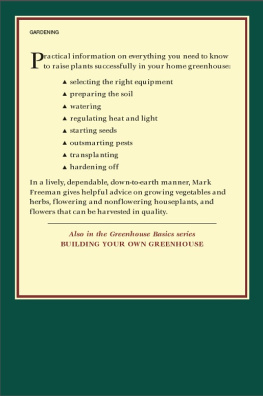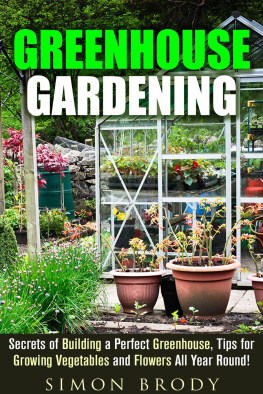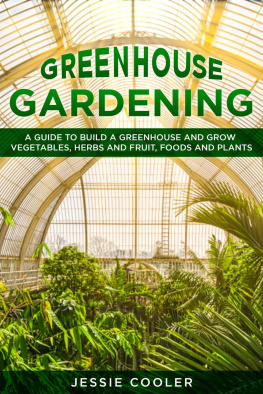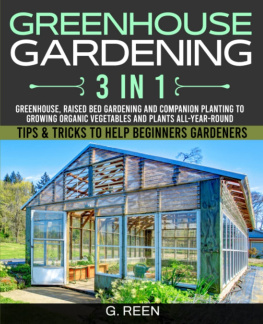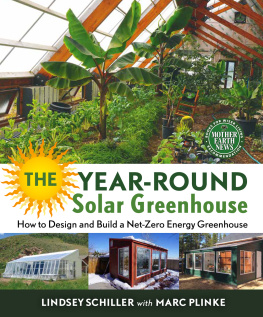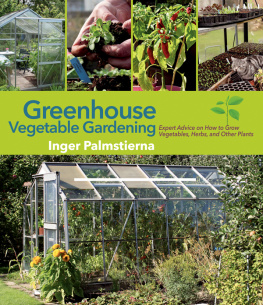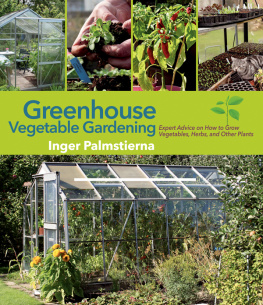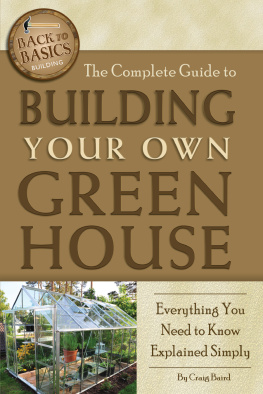

Ted's Greenhouse
Creating a Four-Season Passive Solar
Greenhouse From the Ground Up
By Ted Keller and Peggy Hamill
Published by:
Pale Green Jade Press
40 Camino A Realidad
El Prado
New Mexico, 87529
Ted's Greenhouse
Creating a Four-Season Passive Solar Greenhouse From the Ground Up
Copyright 2017 by Ted Keller and Peggy Hamill
All rights reserved. This book may not be reproduced in whole or part by any process without written permission from the copyright holder.
To the best of our knowledge, the information contained in this book is accurate and complete. All suggestions are made without any guarantee on the part of the authors and Pale Green Jade Press. Due to the variability of local conditions, skills, materials, building site, and so forth, the authors and publisher disclaim any liability for losses, injuries, and/or other damages that may result from actions inspired by the information contained in this book.
Grateful acknowledgements to Mary Greene, Joan Livingston, Bob Daley, and Jeff Leighton for their invaluable editing assistance
ISBN-13: 978-0692373378
ISBN-10: 0692373373
Published by:
Pale Green Jade Press
40 Camino A Realidad
El Prado
New Mexico, 87529
For Chloe, Kimberly,Theo, Megan, and Aidan, Ava, Leo, and Jade Who eat plate after plate of vegetables without too many complaints

Table of Contents

A Note on How This Book Was Written
This book, like Teds Greenhouse itself, is a collaboration of effort, shared desire, and experimentation. Much of the book is written in first-person singular, so it will no doubt be helpful to the reader to know who is speaking in each section. Generally, Ted is the carpenter, and Peggy is the gardener, and we each have written those sections that pertain to our areas of expertise. Our names appear in the Table of Contents under the sections we have authored.
We hope that you will enjoy reading the book as much as we have enjoyed writing it. We would love to hear from you, and our contact information is listed under Resources near the back of the book.
Happy building, and happy gardening.
Ted Keller and Peggy Hamill
Taos, New Mexico

Introduction
Peggy Hamill

Introduction

I absolutely love to grow food. While raising our two daughters, I grew a large, organic, outdoor vegetable garden on the coast of Maine almost every summer from 1974 through 2007. I was able to grow most of the vegetables that my family ate, as well as sharing with neighbors, the local food kitchen, the deer, the bugs, and the rabbits. I raised all manner of roots, corn, tomatoes, peppers, beans, greens, cucumbers, squash, cabbage, and flowers. I filled the root cellar of our old farmhouse with roots and potatoes, the pantry with canned goods, and a freezer with frozen vegetables.
When I moved to the high desert of Taos, New Mexico in 2008 with my husband, Ted Keller, we decided to try our luck here with a small outdoor vegetable garden. It was a complete disaster that lasted several years. The wind was too strong, the sun was too hot, the nights were too cold, and the gophers ate everything that survived the weather. It occurred to us that we could solve these problems by building a greenhouse. We were also intrigued with the prospect of growing our own greens throughout the winter.
Aware that Eliot Coleman and others were growing vegetables in midcoast Maine all winter in unheated hoop houses, we knew what was possible. There are many vegetable crops that can freeze and still flourish. We grow all of our crops organically, so that was another consideration.
My husband loves to build, and when this idea came to us, he had already built several houses and a shed. He was confident that he could put together a greenhouse, and the project excited him. After doing a bit of research, we realized that we wanted to put up a freestanding structure with an insulated foundation, a strong building that would hopefully last for decades, a functional space that would grow vegetables year round. The frame would be of redwood, the panels polycarbonate, and the heat storage, brick, concrete pavers, and cinder blocks. The planting beds would be in the ground. We began to scour the internet for plans. Our goal was to make as much use of the natural light and heat of the New Mexico sun as possible.
We were unable to find any plans that seemed to address our situation. There were a lot of expensive kits for sale, but we did not need the convenience of a kit and did not wish to pay for it.
Not finding plans that applied to our needs, we eventually designed the building ourselves, all the time crossing our fingers that it would work. We built our design, and the structure has functioned better than we ever dreamed it would. We decided to share the plans for the greenhouse that we built with you. This is the book that we wished we had had before we built our greenhouse.
This design is not the most inexpensive greenhouse available. You can put up a far more economical structure that will function reasonably well. However, the extra costs do add an ability to hold heat, sturdiness, convenience, durability, great sunlight, ease of ventilation, and an automation that allows us to travel. We are confident that this building will last for a good many years. Spending a little more also allows for aesthetic appeal. Our visitors describe the building as elegant.
We decided to build a traditional gable-roof-shaped building with an entryway, which in a greenhouse is called a porch. This decision was made mostly for aesthetic reasons. Some suggest a shed roof for a passive solar greenhouse, but we prefer the more traditional shape, both to look at and to work in. Our roof, made of polycarbonate, lets in the light, and we gambled that this would work well for our plants. It does.
We wanted to minimize our use of added fossil fuel heat, and tried to design a building that would capture and store the heat of the sun as much as possible for the long, cold winter nights. We did not know how this would work, so this was another experiment. What we have found is that the greenhouse does grow crops abundantly all winter long for us, and we need to add some heat on the very coldest of winter nights. We have discovered the cost of the occasional heat is well offset by the value of the fresh vegetables.
When I got ready to plant my first greenhouse garden in the fall of 2013, I felt completely unsure of how to start. I was a total newbie to this. It felt strange to be planting in the fall. Without knowing what else to do, I just plunged in, guessing my way through that first year. While I still consider myself a novice at greenhouse growing, in the second half of this book I share my several years of growing experiences with you. My hope is that something here will be useful to you.
Next page

